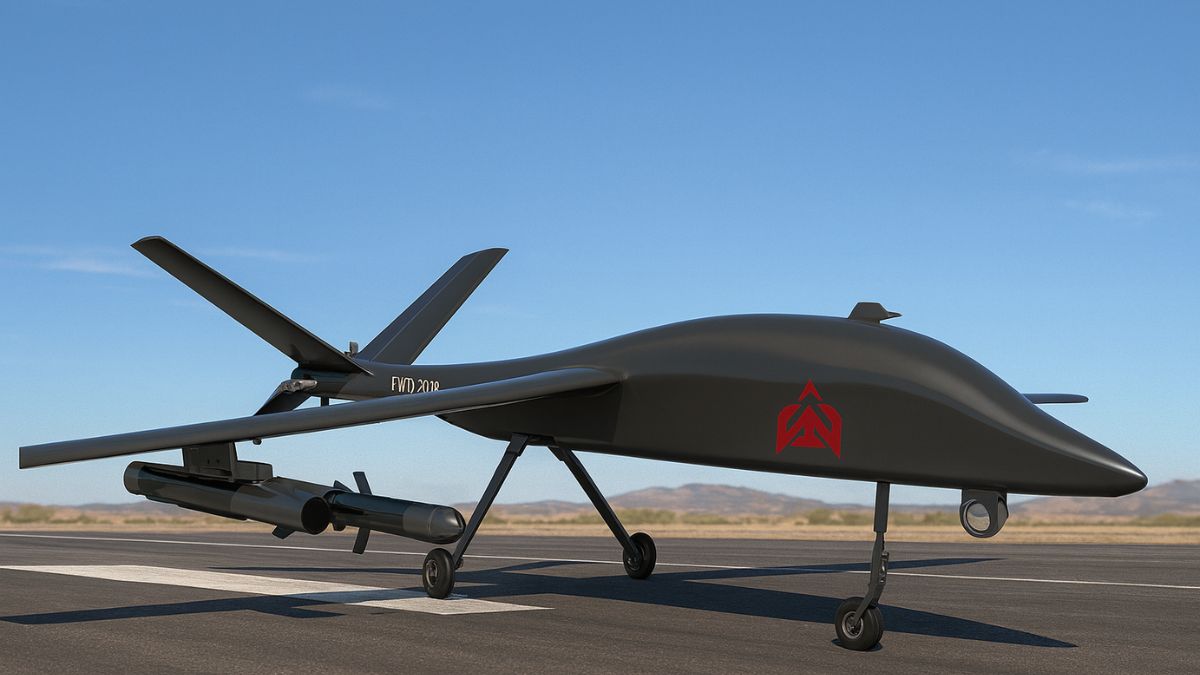An Indian defence start-up has announced the rollout of what it describes as the country’s first fully indigenous Medium Altitude Long Endurance (MALE) autonomous combat aircraft. Bengaluru-based Flying Wedge Defence and Aerospace (FWDA) said its platform, named FWD Kaala Bhairav, is ready for deployment and has already secured an export order worth USD 30 million from a South Asian country.
The drone, which integrates artificial intelligence and swarm warfare capabilities, has been developed under the government’s Atmanirbhar Bharat initiative. Its backers describe it as both a sovereign alternative to foreign systems and an entry point for India into the global drone export market.
What is the Kaala Bhairav Combat Drone Designed to Do?
Inspired by the guardian deity Kaala Bhairav, the drone is built for endurance of up to 30 hours and a range of 3,000 km. Its modular platform enables roles ranging from reconnaissance to precision strikes, while swarm technology allows multiple drones to coordinate attacks that can saturate enemy air defence systems.
According to FWDA, ten Kaala Bhairav drones can replicate the surveillance power of a single Predator-class system at a fraction of the cost. This, they argue, transforms battlefield economics by reducing the impact of any single loss, while multiplying overall capacity.
Why Does the FWDA Call Foreign Drones a Strategic Liability?
Founder and CEO Suhas Tejaskanda said India’s historic dependence on imported drones had come at a “high strategic cost,” with concerns about hidden kill-switches and sensitive data being routed through foreign servers. He argued that tightening defence regulations in the US, along with shifting global policies, have increased the risk of digital dependency during wartime.
“Dependence on foreign systems could limit India’s strategic autonomy, as sensitive operational data may be routed through external networks and remain accessible to overseas agencies,” he said.
How Does the FWD Kaala Bhairav Position India in the Global Drone Market?
FWDA claims that the Kaala Bhairav is built at one-tenth the cost of US Predator-class systems such as the MQ-9 Reaper, offering comparable endurance at significantly lower risk. Built entirely in-house, it eliminates reliance on foreign original equipment manufacturers, creating a “sanctions-proof” supply chain. The firm says the platform is fully indigenous, with its own maintenance, repair and overhaul ecosystem to ensure quicker turnaround and lower lifecycle costs.
For the government, the launch represents more than an engineering milestone. It signals India’s gradual movement away from being one of the world’s largest arms importers toward becoming an exporter of next-generation defence systems.
